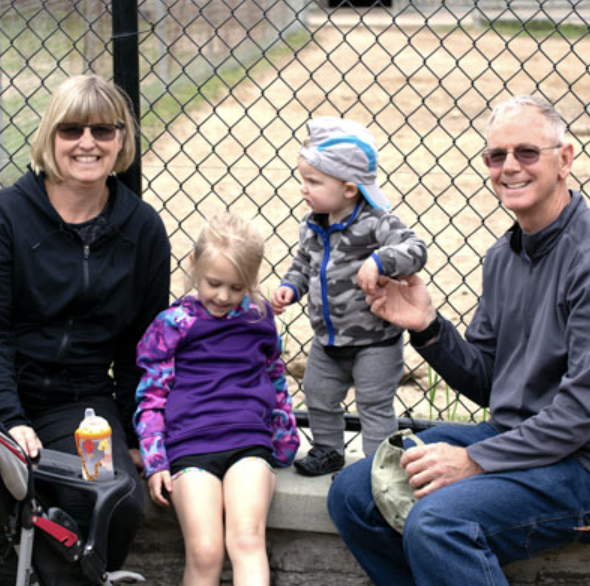

Don’t miss out on attending Como Friends biggest event this summer on Thursday, July 18th. Sunset Affair: Our Wild World tickets will be available soon!
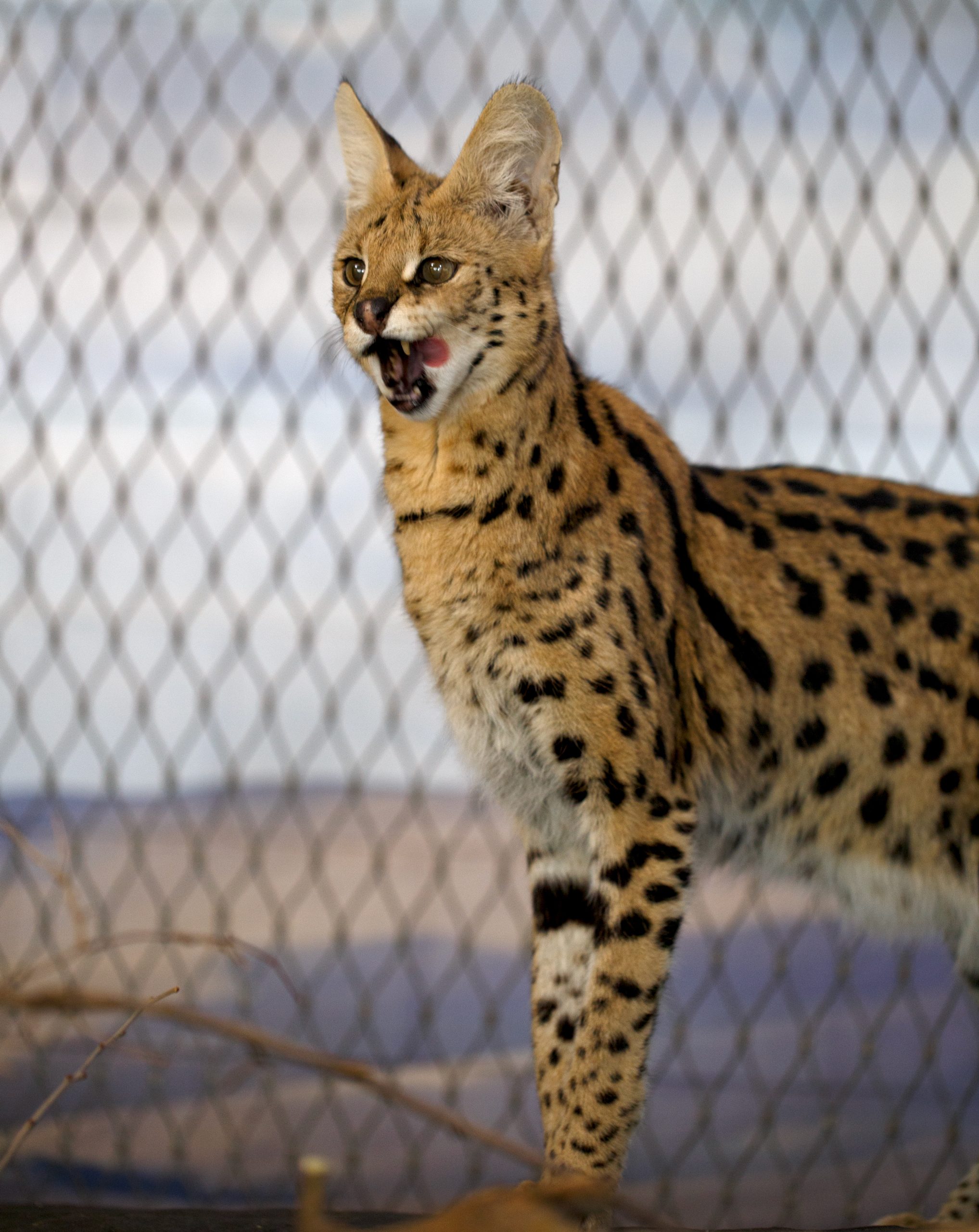
Humans aren’t the only species that seem to get a spring in their step when the weather turns warm. Jill Erzar, a senior zookeeper at Como Zoo, believes animals anticipate spring just as we do.
“It seems like animals are always a little more excited this time of year,” she says. “The ice has thawed, there are new smells in their habitats, and of course, many more visitors.”
On your next visit to Como, you may notice some changes, as zookeepers take advantage of the spring weather to welcome new animals, say goodbye to old friends, and provide best practice veterinary care to animals. Here’s a look:
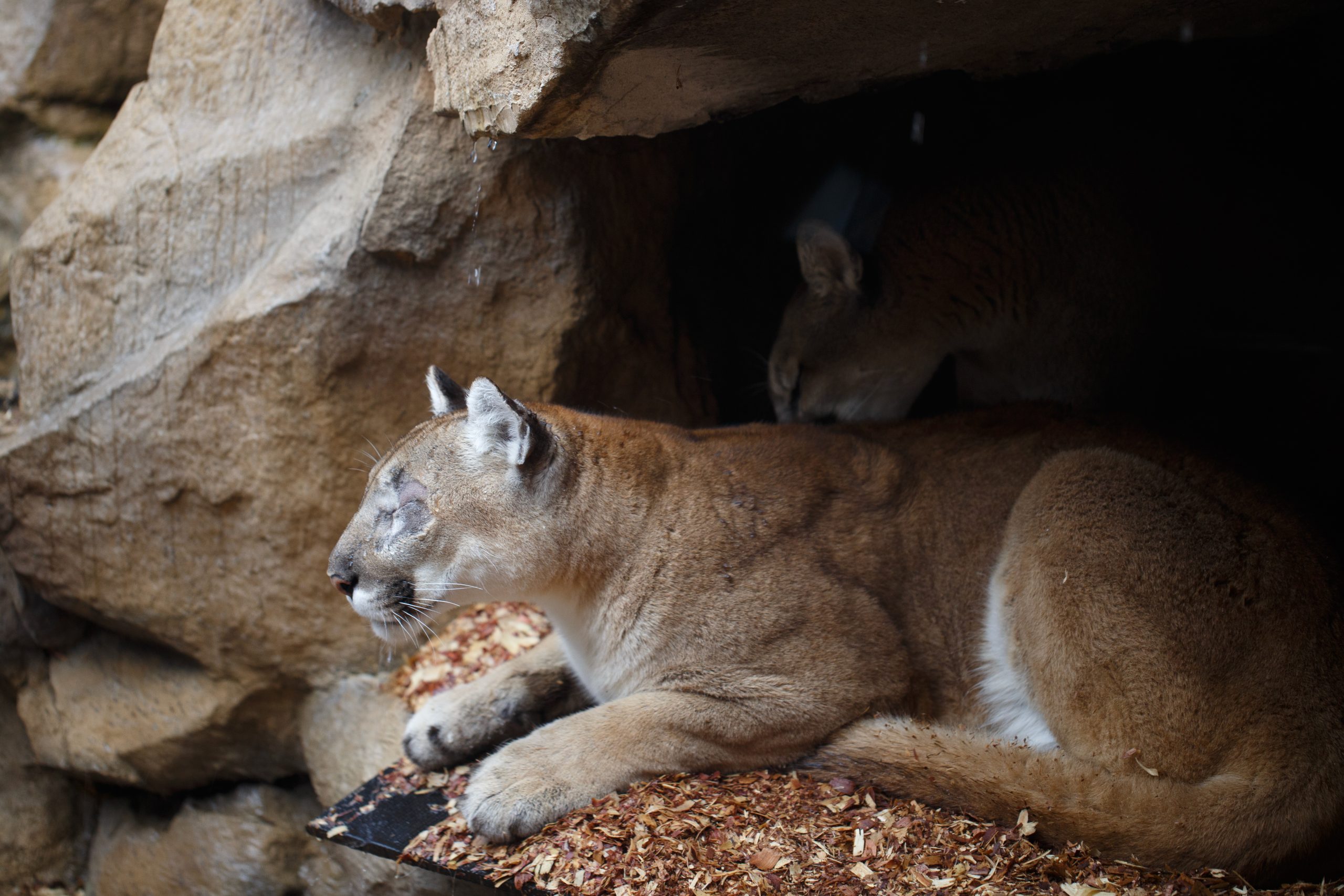
Though he’s blind, 4-year-old Jasper the cougar has no problem navigating his habitat at Como Zoo. But when complications from progressive retinal atrophy were causing additional health problems and discomfort for the young animal, zookeepers made the difficult decision, in partnership with veterinarians, to remove his nonfunctioning eyes during a successful surgery you may have heard about here at MPRNews and here at FOX9. Now back in his habitat, Erzar says, “Jasper may be more cautious at this point moving around, but his activity will likely appear normal since he was unseeing prior to the surgery and was accustomed to his habitat.”
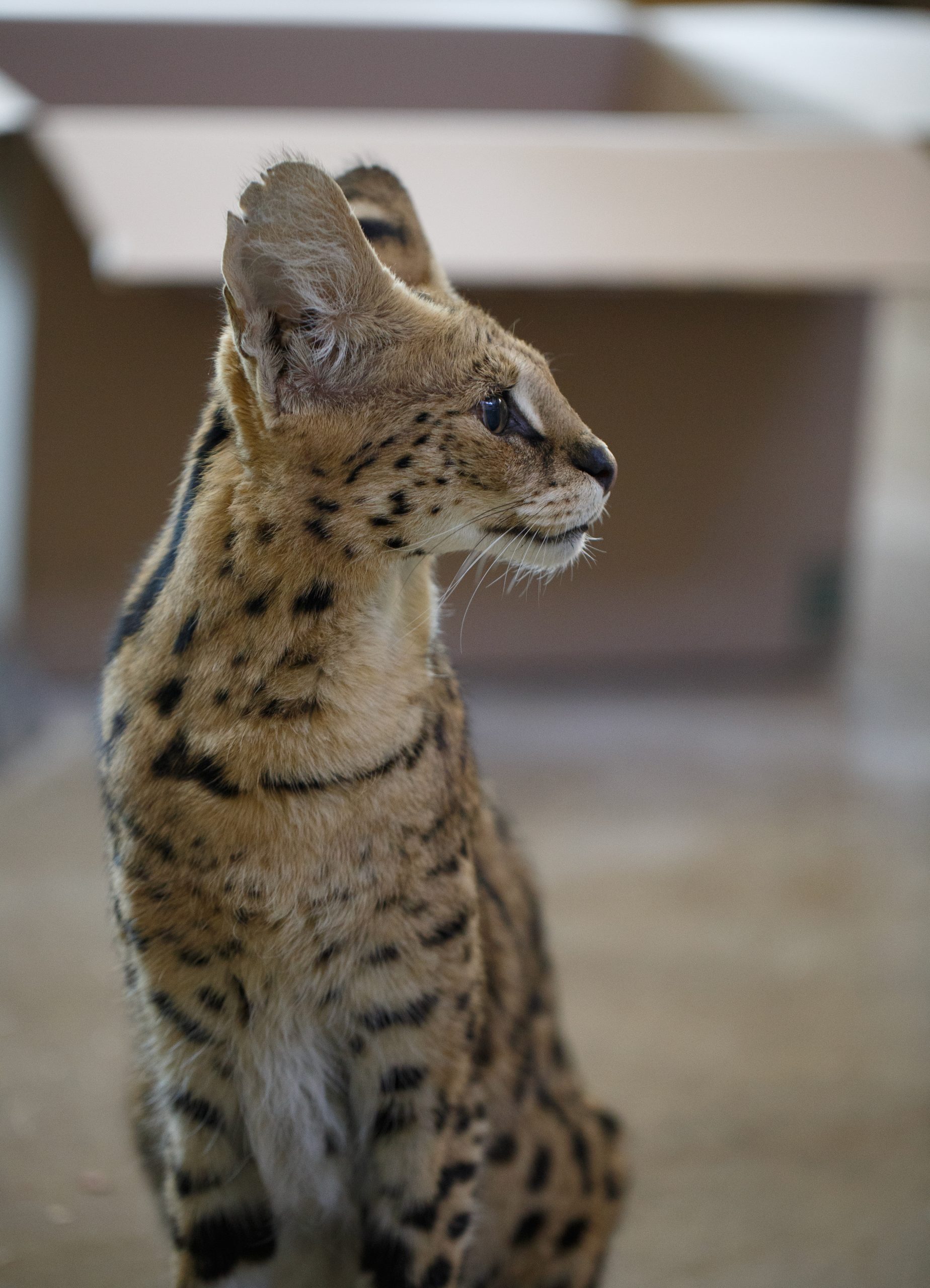
There’s another new face in the large cat building—Lily, a 19-year-old serval. A long-time resident of Bismarck’s Dakota Zoo, Lily moved to Como in March where she will live out her golden years. “We had the space and the capabilities to give her a quiet retirement home while sharing her story with our visitors,” says Erzar. “At 19, she’s at the top of the age range for her species,” but keepers report she’s thriving in her new habitat.
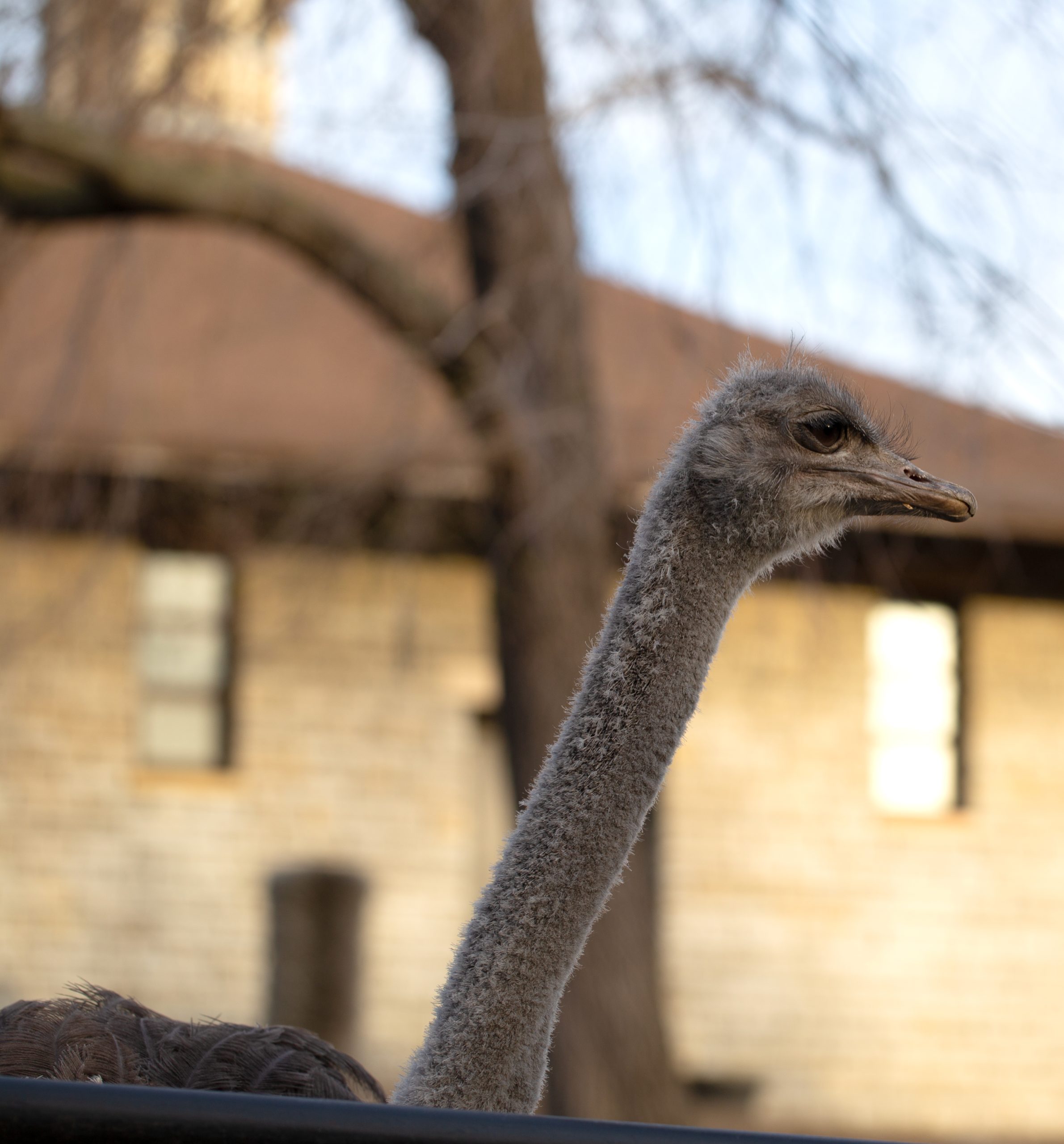
Como’s Old Barn has historically been the home of cold-weather animals like bison and Arctic fox. But this summer, two new ostriches will take over the space previously occupied by Forest the reindeer, who has joined a herd of male reindeers at the Minnesota Zoo. The young ostriches, both hatched last August, will eventually join Pickles the ostrich, who shares a habitat with Como’s giraffe herd at the African Hoofstock building.
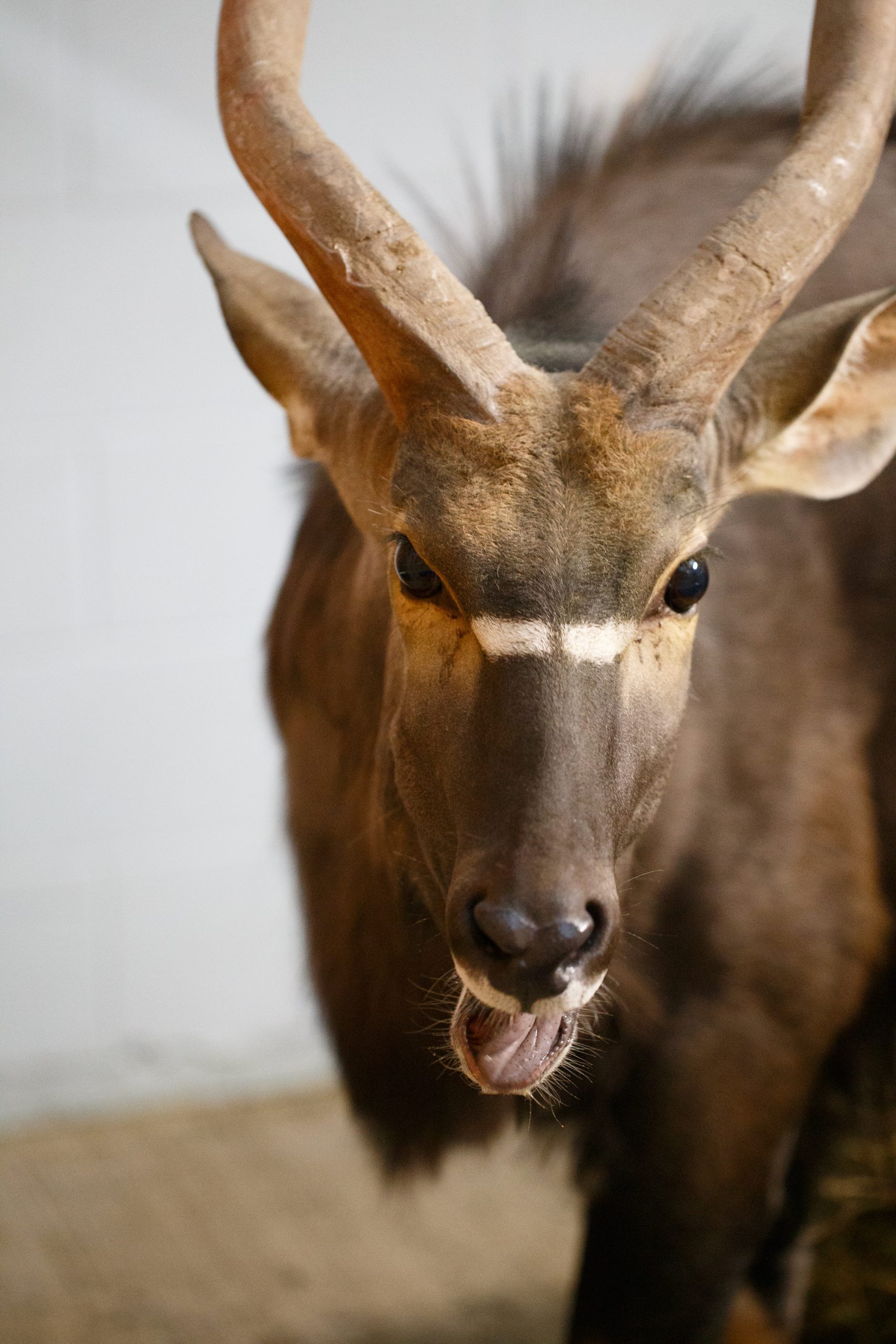
While Como Zoo has had years of success breeding lesser kudu, Minnesota’s long, cold winters have never been the ideal climate for these African antelopes. “Lesser kudu are wonderful animals, but they’re freeze babies, and they don’t like to be outdoors when temps drop below about 55 degrees,” says Erzar. “They’re also very nervous animals, and though we’re a small zoo, we have a very large visitor base that’s not ideal for them.” To promote their welfare, Como’s lesser kudu have moved to warmer climes, while a breeding pair of nyala are moving in. Another breed of African antelope, but with long flowing hair, Erzar says, “they’re known for being more cold tolerant and less stressed by human interaction.” Look for male Stanley to make his Como debut within the next week, while female Stevie will join him later this summer.
With their Lilliputian leaves, undulating branches, and fairytale trunks, bonsai can sometimes seem like they come from another world. That’s why Como horticulturist Reva Kos tries to take the mystery out of these miniature potted trees when she talks with curious visitors at the Marjorie McNeely Conservatory.
“I want visitors to know that really anyone can create a bonsai,” says Kos, who has served as the curator of Como’s bonsai collection for the past decade. “They’re special trees because of how we take care of them, but they’re just trees. They’re not magically small—they’re just well loved.”
Over the last three decades, the Marjorie McNeely Conservatory’s bonsai collection has been very well loved—not only by Como’s horticultural staff, but also by the Minnesota Bonsai Society. Starting in the early 90s, when First Bank donated a sizable collection of bonsai to the Conservatory, a long list of dedicated volunteers from the Minnesota Bonsai Society (MBS) have contributed their time and expertise in training one of the best bonsai collections for public display in the Midwest. “We wouldn’t have the collection we have without the Bonsai Society,” says Kos. “Working with our volunteers is a collaboration. Everyone who works with bonsai is opinionated about what should happen next with a tree, and it’s fun to bounce ideas off each other.”
MBS member Kirk Hedberg agrees. “With other kinds of artwork, like painting or sculp- ture, you’ll reach a point where you know it’s done, but the thing that’s fascinating about bonsai is that you’re never done—the tree keeps growing and adapting, and you come to an agreement with the tree over a long period of time about how it’s going to look. The tree has ideas and you have ideas, and they’re not always going to mesh.”
A bonsai enthusiast since the 1970s, Hedberg, a retired chemistry teacher from Afton, makes the trip to Como every week to help prune, wire, clean and repot the Conservatory’s collection of more than 130 trees, which range from traditional Japanese maples and junipers, to Ponderosa pines from the Rocky Mountains and Tamarack from Minnesota’s north shore. The wide variety of species, sizes and characteristics of Como’s bonsai allows Kos to select the trees that are blooming or look the best at a given moment for public display in The Ordway Gardens. The upcoming Mother’s Day Bonsai show, slated for May 13 and 14, is a great time to discover the beauty of bonsai, with a few of Kos’ and Hedberg’s insider tips.
Leaning In: Bonsai trunks often tip toward the viewer, a visual trick that draws viewers in to the miniature world bonsai masters are trying to create. But leaning in is not a requirement. “Once you learn all the rules of bonsai, you discover that some of the most beautiful trees break them all,” says Hedberg.
Asian Roots: Bonsai has roots that go back to China in 700 AD where crafting elegant potted trees or “pun-sai” was only for the elite. By the 1200s, bonsai had become a mainstay of Japanese horticulture, spreading through Europe and the West by the late 19th century. As a result, every culture has a certain style, says Hedberg, from the more densely “helmeted” trees you might see in a European collection, to the airier American style influenced by California bonsai master John Yoshio Naka, who believed branches must “leave room for the birds to fly through.” No matter where they come from, Kos says, bonsai are typically planted in a soilless mixture of pumice, lava rock, and akadama, granular clay-like material mined from the volcanic soil near Japan’s Mount Fuji.
Bonsai Styles: Como’s collection includes a wide range of bonsai styles and plant materials, like the Ponderosa pine featured above. Each inset also features a distinct aesthetic style: examples shown above, the Trident Maple with an S-shaped trunk is trained in the informal upright style (Moyogi ); the Japanese Greybark Elm are arranged in a forest style (Yose-ue); the White Cedar represents the formal upright style (Chokkan); and the Chinese Elm features a semi-cascading style (Han-kengai), with branches that drop below the top of the pot.
Artificial Aging: Some of Como’s bonsai are more than 450 years old, but many more are just trained to look that way, with winding trunks and flaring root systems (Nebari) that make the tree look like it’s survived the elements. “Age is an important part of the aesthetic,” says Hedberg. “If you can make a 20-year-old tree look like it’s 200 years old, that’s a successful bonsai.”

Win an opportunity to meet Como’s penguins!
Como Park Zoo and Conservatory and Xcel Energy are inviting Como’s community to join the pledge and take small steps to save energy that can make a big difference for the environment we all depend on. By pledging to conserve, you’ll also be entered to win a Como Park Zoo and Conservatory & Xcel Energy prize pack, which consists of the opportunity to participate in a Como Zoo penguin meet and greet, an Ecobee Smart Thermostat, Google Nest Mini and energy-efficient LED light bulbs!
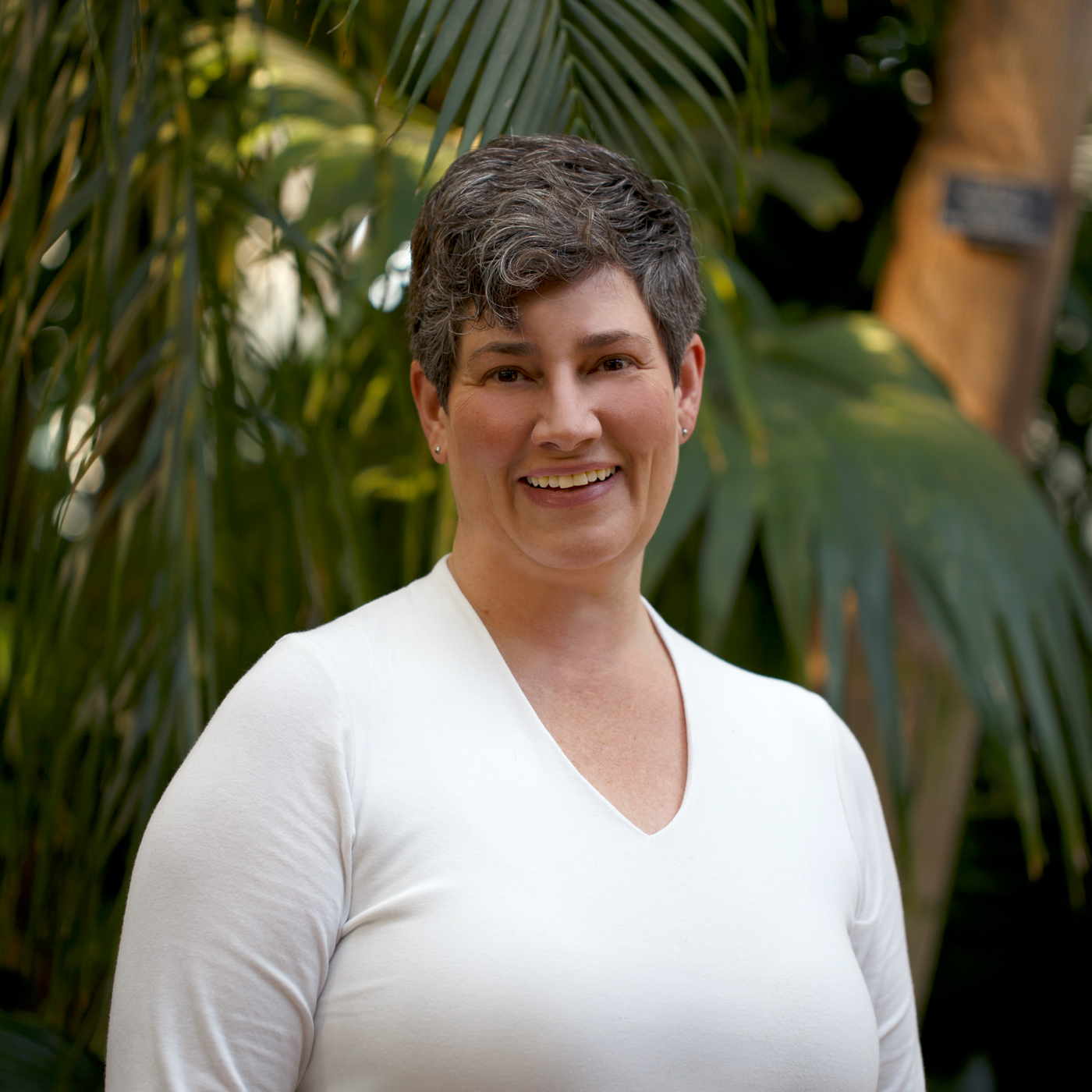

Parking will Remain Free at Como Park Zoo & Conservatory!
Como Friends is happy to share that the City of Saint Paul has determined that parking will remain free in Como Regional Park, including at Como Park Zoo & Conservatory and will not be pursued for the 2021 budget.
The decision was made based on findings from the Paid Parking Feasibility Study. Key discoveries included a likely decline in people visiting Como Park Zoo & Conservatory because of paid parking and a decline in food and retail purchases during a visit.
Como Friends will advance our mission-driven work to inspire support for the zoo and conservatory so it remains a vibrant and welcoming place where future generations can explore and make memories.
Be sure to join our Como Promo email newsletter list at https://comofriends.org/get-involved/the-como-promo/ to stay informed on the latest developments, and to learn more about Como Friends’ advocacy work on behalf of the nearly two million visitors who come to Como Park Zoo & Conservatory every year. Thank you for all you do to support free access and needed improvements at Como Park Zoo & Conservatory, to ensure this beloved treasure is thriving for generations to come.
Parking will Remain Free at Como Park Zoo & Conservatory!
Como Friends is happy to share that the City of Saint Paul has determined that parking will remain free in Como Regional Park, including at Como Park Zoo & Conservatory and will not be pursued for the 2021 budget.
The decision was made based on findings from the Paid Parking Feasibility Study. Key discoveries included a likely decline in people visiting Como Park Zoo & Conservatory because of paid parking and a decline in food and retail purchases during a visit.
Como Friends will advance our mission-driven work to inspire support for the zoo and conservatory so it remains a vibrant and welcoming place where future generations can explore and make memories.
Be sure to join our Como Promo email newsletter list at https://comofriends.org/get-involved/the-como-promo/ to stay informed on the latest developments, and to learn more about Como Friends’ advocacy work on behalf of the nearly two million visitors who come to Como Park Zoo & Conservatory every year. Thank you for all you do to support free access and needed improvements at Como Park Zoo & Conservatory, to ensure this beloved treasure is thriving for generations to come.
DID YOU KNOW?
Parking will Remain Free at Como Park Zoo & Conservatory!
Como Friends is happy to share that the City of Saint Paul has determined that parking will remain free in Como Regional Park, including at Como Park Zoo & Conservatory and will not be pursued for the 2021 budget.
The decision was made based on findings from the Paid Parking Feasibility Study. Key discoveries included a likely decline in people visiting Como Park Zoo & Conservatory because of paid parking and a decline in food and retail purchases during a visit.
Como Friends will advance our mission-driven work to inspire support for the zoo and conservatory so it remains a vibrant and welcoming place where future generations can explore and make memories.
Be sure to join our Como Promo email newsletter list at https://comofriends.org/get-involved/the-como-promo/ to stay informed on the latest developments, and to learn more about Como Friends’ advocacy work on behalf of the nearly two million visitors who come to Como Park Zoo & Conservatory every year. Thank you for all you do to support free access and needed improvements at Como Park Zoo & Conservatory, to ensure this beloved treasure is thriving for generations to come.
Parking will Remain Free at Como Park Zoo & Conservatory!
Como Friends is happy to share that the City of Saint Paul has determined that parking will remain free in Como Regional Park, including at Como Park Zoo & Conservatory and will not be pursued for the 2021 budget.
The decision was made based on findings from the Paid Parking Feasibility Study. Key discoveries included a likely decline in people visiting Como Park Zoo & Conservatory because of paid parking and a decline in food and retail purchases during a visit.
Como Friends will advance our mission-driven work to inspire support for the zoo and conservatory so it remains a vibrant and welcoming place where future generations can explore and make memories.
Be sure to join our Como Promo email newsletter list at https://comofriends.org/get-involved/the-como-promo/ to stay informed on the latest developments, and to learn more about Como Friends’ advocacy work on behalf of the nearly two million visitors who come to Como Park Zoo & Conservatory every year. Thank you for all you do to support free access and needed improvements at Como Park Zoo & Conservatory, to ensure this beloved treasure is thriving for generations to come.
DID YOU KNOW?
While the historic Como Zoo and the Marjorie McNeely Conservatory are two of St. Paul’s most beloved cultural treasures, only 16 percent of Como’s average 1.7 million annual visitors come from the Capital City. “An even larger number of visitors, more than 400,000 every year, are actually from greater Minnesota, and 15 percent come from outside the state,” says Michelle Furrer, Como’s Campus Director. “The sheer number of visitors to Como makes clear that we’re an important part of the tourism economy.” In fact, a 2015 study from Sapphire Consulting found that Como annually generates more than $162.7 million in economic impact for our region, along with nearly 2,100 jobs.
Just as important to Minnesota lawmakers, says Furrer, was the strong public/private partnership between Como Friends and Como Park Zoo and Conservatory. “Seeking state funding is a competitive process because there are so many needs across the state,” she says. “Having a strong track record of success working with Como Friends to build improvements like Polar Bear Odyssey and The Ordway Gardens definitely strengthened our case. It showed legislators that we had the community support behind us to leverage additional dollars to achieve our goals with Como Harbor.”
“We’re so proud of what our supporters have made possible in Como Harbor,” says Jackie Sticha. “Generous philanthropic gifts and public funding mean that transformational improvements are possible at Como without compromising our commitment to free admission and barrier-free access for everyone.”
“It is our first visit here, and it is an amazing opportunity. We asked how much it was and they said it’s free. And I said, ‘Are you sure?” –Lionnel Djon, Thunder Bay, Ontario
THANKS TO YOUR SUPPORT COMO, IS FREE AND FABULOUS, 365 DAYS A YEAR
Admission is free. Parking is free. Children are free. Adults are free. Como Zoo is free. The Marjorie McNeely Conservatory is free. At Como, free means free.
Como was founded by visionaries and volunteers who foresaw the need for creating a public green space at the heart center of the Twin Cities. More than a century later, that vision has made Como Park Zoo & Conservatory the most visited cultural destination in the state of Minnesota, often welcoming nearly two million children and adults each year. With its historic architecture, significant horticultural collections and state-of-the-art habitats, visiting Como has been a shared memory for more than five generations of Minnesotans.
But what’s truly unique when compared to other zoos and botanical gardens across the country is Como’s open door policy–free admission that’s made possible, in part, by your contributions to Como Friends. “Over the past 20 years, our successful public/private partnership has helped protect the free admission this community cares about, and to introduce a whole new generation to the wonders of nature without any barriers to access,” says Jackie Sticha, President of Como Friends, the nonprofit fundraising partner of Como Park Zoo and Conservatory.
We recently asked a few of Como’s two million annual visitors to talk about why kids need time in nature and what free admission means to them.
“My family and grandkids had the opportunity to spend the day at Como Park Zoo & Conservatory. It was the best day ever!How wonderful that we could see and do so many things for FREE! We did make a donation. It made me realize how many wouldn’t be there if there was a big entrance and parking fee like so many other places. Everyone has a chance to go. That is so great!!
Thank you so much for giving families this memorable experience.” – Como Visitor
One of Como Zoo’s first female keepers, Marisa Paulat has spent 43 years loving and learning from large cats
Zookeeping was a male-dominated profession in the late 1960s when 11-year-old Marisa Paulat announced to her parents that she wanted to take care of the animals at Como Zoo. A decade later, when she was finally old enough to apply for a position, there were still just two women on Como Zoo’s staff, “and they made it clear they didn’t want to hire any more,” Paulat says, remembering the demanding physical endurance test she was required to pass in 1979 before she could be considered for the job.
“The idea was to weed out any women who were going to apply. But I practiced all summer running 50 yard dashes with a 50 pound sandbag on my shoulder,” she says. “I was not going to let them take this chance away from me.”
That tenacity helped earn Paulat her dream job caring for Como Zoo’s large cats, where she’s enjoyed a reputation for winning over felines too big to be toyed with. “If there’s one thing I’m good at, it’s breaking through to challenging animals that have maybe had some bad experiences in their lives,” she says. “Sometimes it takes months of perseverance, but if you leave me alone with them, I will break through.” Set to retire in late June after 43 years of service, Paulat recently sat down with Como Friends to share her secrets for making the world’s largest felines fall in love with her.
Zookeeping as a profession has really evolved over the last 40 years. What was it like when you started?
What surprised me when I first started was that it was more of a civil service job than it was about animal care, and there weren’t a whole lot of us on staff. So zookeepers were the jack-of-all-trades—we did the maintenance, we cleaned the buildings, we closed the gates, we did security, we made the public announcements, we answered the phone, we did the secretarial work, we got everyone off the zoo grounds at the end of the day. We counted the money from the pop machines and we weighed the big anaconda. If there was anything to do, we did it.
Your tenure also coincides with Como’s transition from being a small city zoo, to becoming an accredited zoo with a strong reputation for animal care.
Yes, one of the highlights of my career was being here from the very beginning and watching Como evolve the way it has. Como Zoo was supposed to close when they built the Minnesota Zoo—that was the game plan. But the neighborhood didn’t want that to happen, and instead, helped us to improve. I was part of the very first accreditation process with the Association of Zoos and Aquariums which was really hard work, and we’ve been continually reaccredited ever since. Enrichment is, in my eyes, the most important thing we can do for animals, and that began to grow at the same time new buildings were going up. The building that enabled the Zoo to move forward the most was the new Visitor Center in 2003—that’s when things just skyrocketed forward with higher-end functions like classrooms, and rental space for weddings, and a beautiful building for the community. Being able to reach out to the public like that helped us to move forward faster.
Teaching the public about what zoos can do to support conservation has also moved front and center at Como.
That’s really true. One of the things I’m very proud of is what we’ve done for cougars. In the old days, we had cougars that had come from people’s homes as pets, which is not something we want to encourage. When one of our cougars died of old age, I talked our zoo director into keeping the exhibit empty for a couple of years until we could rescue orphaned cougars from the wild. In the 1980s, U.S. Fish and Wildlife preferred to euthanize cougars that were orphaned in the wild, so I worked with another keeper in Oregon to convince them that cougar cubs from the wild would have good homes in zoos. Sienna and Sierra were the first two cubs we helped save from the wild, and now, of course, we have Ruby and Jasper. Every zoo in the nation now gets their cougars from the wild, and we don’t breed them because there are so many orphaned cubs that need rescuing. I’m very proud of what we did to convince them that zoos could be part of the solution.
During your career, you must have given thousands of keeper talks about large cats. Of the 40 known species of wild cats in the world, which kind are your favorite?
The striped and spotted ones, tigers and leopards, are the most beautiful of the cats. But after caring for so many African lions here at Como, I think they’re my favorite. They’re the only species that live in groups called prides, and watching the social interactions between the males and females, the whole family structure, and how the males actually help with cubs, I just find them the most fascinating.
You became an honorary member of the pride by raising one of Como Zoo’s most legendary lions, Mufasa, by hand from the time he was just three weeks old. How did that happen, and what kind of relationship did the two of you have?
His mother, Wynona, was a great mother to previous litters and other cubs who came after him. But she had a birth canal infection not long after he was born, and pushed him away and stopped feeding him. So it was my job to bathe him, and burp him and bottle-feed him until he could be reintroduced to his sister Savanna at about six months old and learn how to be a lion. When he was just a year old, he broke his leg while he was on exhibit, and I was able to talk him in on three legs to come into the building, because he trusted me. Every morning for 17 years when I walked in, he would vocalize and push his head against the mesh. I had the privilege of seeing the entire life of an animal, from beginning to end, in a way that most zookeepers will never get a chance to see. I was “Mom” to Mufasa until the day he died.
Very few humans will ever get to know a magnificent animal like Mufasa in quite the way you did. What are the secrets to building that connection with large cats, or with any other animal?
There’s only one secret—to love them so much. If you care about them so much, they know and they’re going to respond to that. And then every day after that, every action you take will be based on how much you care, and it’s going to be the right thing. You can’t go wrong then, because you’re working from your heart.
Have you ever had any close calls?
No. Never. That’s my story and I’m sticking to it.
So a prowling tiger or a roaring lion doesn’t intimidate you?
You should be intimidated! If you don’t jump, that makes them feel so bad. But you do get to the point where you expect it and you don’t jump as much. Though every once in a while they’ll try to catch you off-guard.
Any parting advice for your fellow zookeepers?
Yes! I always tell people to squeeze the clicker and not the reinforcement. Never park under the snow leopard habitat unless you want your car to have a very special snow leopard smell after you leave, besides that, my parking spot! Don’t ever move the spoon—my cat keeping colleague Hans will know what that means. Don’t Google “wild cougars in Minnesota”—you have no idea what will come up! Look out for Nicholas, the tiger ghost. Cats aren’t the only ones who like benches. And, find enjoyment every day you have here at Como—it’s a special place.
Designed by Marjorie McNeely Conservatory’s horticulturist Ariel Dressler, this summer’s Sunken Garden Show is all about summer sunsets
Summer sunsets are the inspiration for this year’s Summer Flower Show, featuring a warm palette of glowing tropical and seasonal annuals. From fiery reds like the Hibiscus ‘Imperial Dragon’, red salvia and dark red verbena, to citrus-y orange begonias, tangerine impatiens, striped tiki torch petunias, and canna, the Marjorie McNeely Conservatory’s longest-running flower show captures the gloaming warmth of the season’s long days.